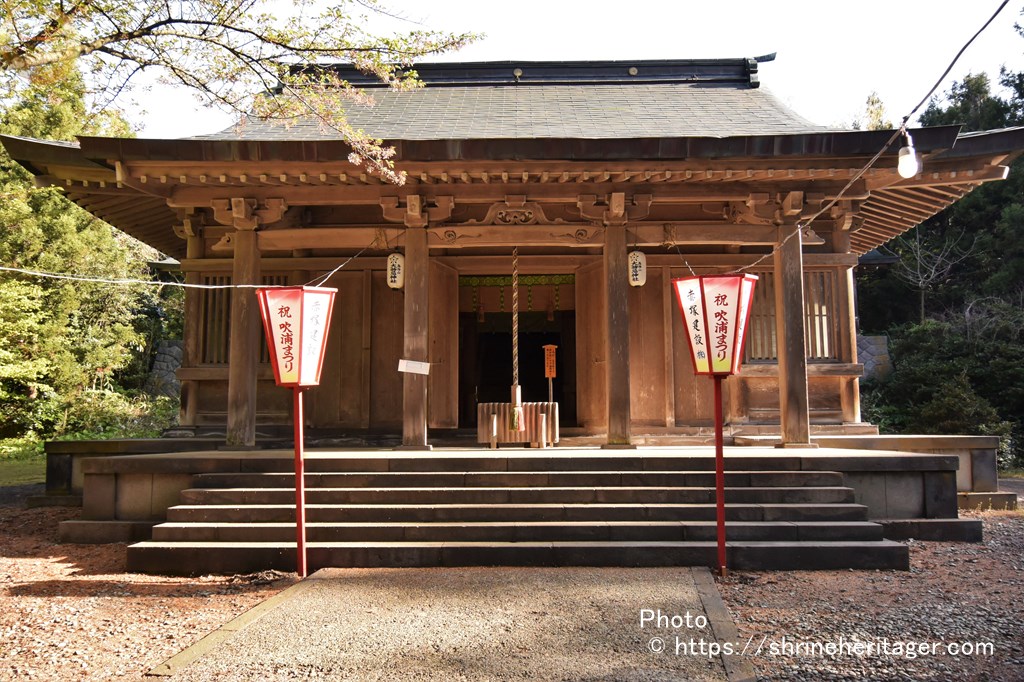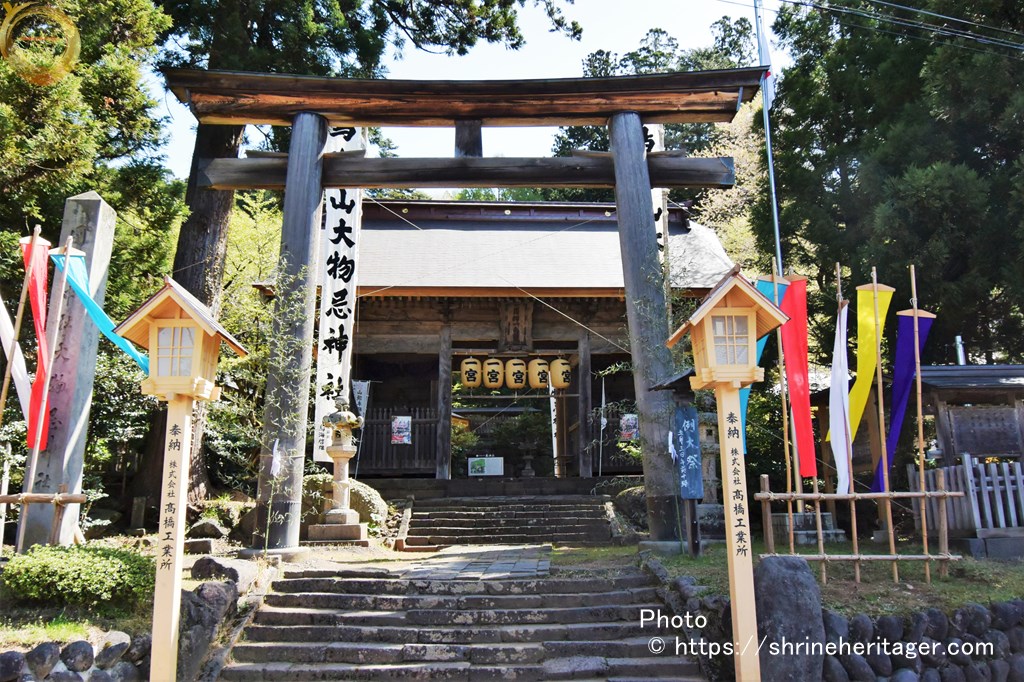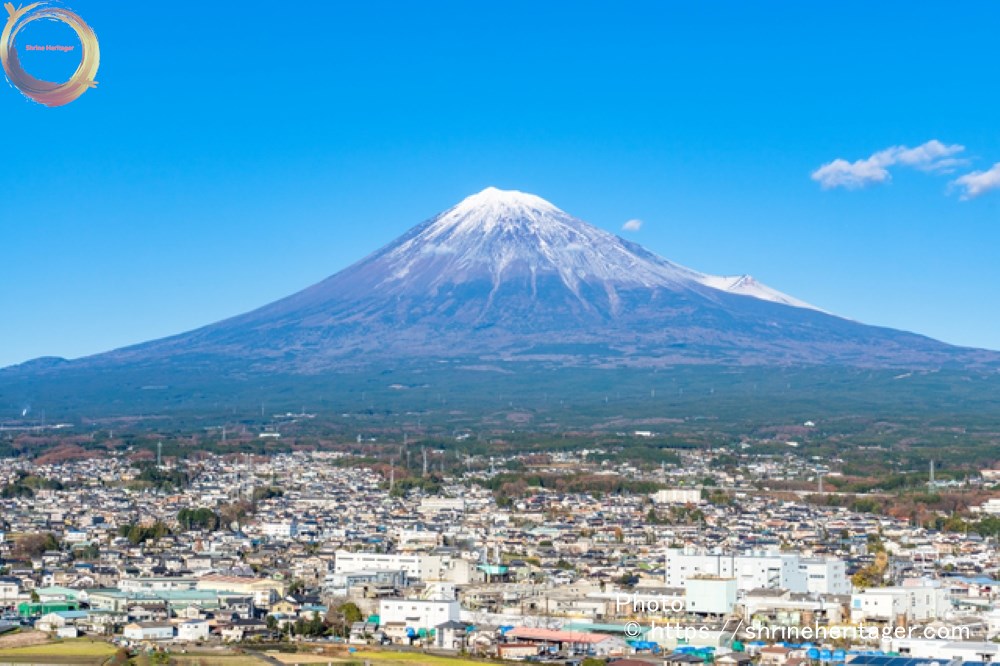鳥海山大物忌神社(chokaizan omonoimi shrine) is Ichinomiya Dewa Kuninomiya. There are 3 shrines with Mt. The Satomiya called "kuchi no miya" is located in two places, "「吹浦(fuku ra)」" and "「蕨岡(warabi oka)」". It is an old company
目次
- 1 1.Introduction (Introduction)
- 2 Preliminary knowledge of this shrine (Preliminary Knowledge of This Shrine)
- 3 Visit the Shrine (Pray at the Shrine)
- 4 神社の伝承(Old tales handed down to shrines)
1.Introduction (Introduction)
The official name of this shrine and how to be called The present address and map I will introduce the history of the god and the shrine enshrined.
[Shrine name]
(chokaizan omonoimi shrine)鳥海山大物忌神社
(fuku ra kuchi no miya)(吹浦口ノ宮)
[読 み (How to read)]
(ちょうかいざんおおものいみじんじゃ ふくらくちのみや)
[Common name]
[Location]
Fukura Nunokura, Yusa Town, Yamagata Prefecture, Japan1
[Google Map]
[God's name to pray]
《主》大物忌大神(ohomonoimi no ohokami)
(It is said to be the same god as 倉稲魂命・豊受姫神)
月山神(tsukiyama no kami)
(It is said to be the same 月読命)
[God's Great power]
・家内安全 Safe and comfortable home life
・身体堅固 The body is solid and strong
・五穀豊穣 Pray for good harvest
・商売繁盛 Wishing business prosperity
・交通安全 Pray for Traffic safety
・等 etc
【格 式 (Rules of dignity]
・『延喜式神名帳(engishiki jimmeicho)』所載社
・ 出羽国一之宮
・ 別表神社
【創 建 (Beginning of history)】
It is said that this shrine was settled on Mt. Chokai,the highest peak in Tohoku, 25 years after Emperor 欽明天皇, 1,400 years ago.
In 4th year of Jogan(貞観), he was entrusted to the state shrine,
and entrusted to the state's rituals. For Enki 's system(延喜の制), he went to Fukiuraguchi's shrine at Tsukiyama Shrine (月山神社)of the Shinza shrine to Meishin Shrine (名神大社)
and later to Dewakuni Ichinomiya. (出羽国一の宮)
deposit, 1871 Country Hey become a Jhongshe,
after the war, was renamed the Chokai big memorial shrine(鳥海山大物忌神社) in 1955, we have reached the present.
It is a religious shrine with Mt. Chokai as the shrine.From the official website
【由 緒 (history)】
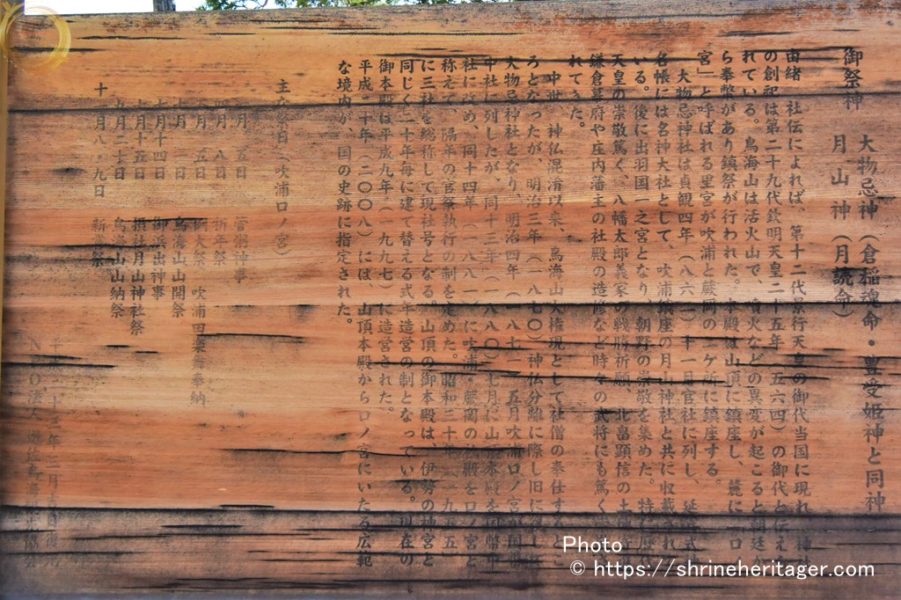
It is said that the Shinto shrine was built in the 20th year of Emperor 欽明天皇(1,400 years ago).
Mt. Chokai is an active volcano, and in the event of an eruption or other abnormal event, the royal court enshrined it and held a ceremony. The head office is located at the summit of the mountain,
and a village called "Kuchinomiya" is located at the foothills of Fukiura and Warabioka.The Daimonosai Shrine is lined up in November of the 6th year of Jokan (886), and is listed as a Meishin Taisha Shrine in the Enki Shiki Shrine along with the Gassan Shrine of Fukiura Zinza.
Later, he became the deity of Kuniichi Dewa and gained the respect of Asano.
In particular, he was respected by successive Emperors, praying for the victory of the Tachiyoshi Hachiman family, donating land by Kennobu Hatatake, and repairing the shrines of the Kamakura Shogunate and the Shonai lord.
In the Middle Ages, "Since the shrines and Buddha were mixed, it became a place for the monks to serve as the Chokaiyama Daigongen. Although it was lined up in Chusha, the summit head office was reorganized in July, 2013, and the shrines in Fukiura and Kuraoka were called Kuchinomiya in 1964, and a banquet system was established every other year. It was
In 1945, the three companies were collectively called the current company name.
The Gotenden at the top of the mountain has a system of year-of-year construction that is rebuilt every 20 years like Iseno Shrine.
The current main shrine was built in 1997.
From the official website
【境内社 (Other deities within the precincts)】
Next to the main hall
Heading to the left
・白山姫神社《主》伊邪那美命
Center
・風神社 《主》志那津彦命・志那津姫命(石段横より遷座)
Right towards
・雷電神社《主》雷神
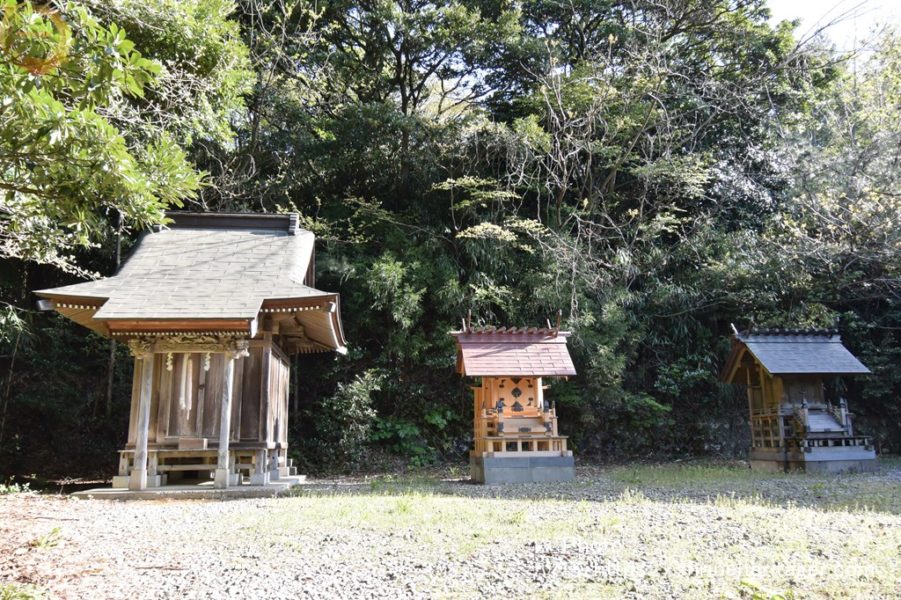
Stone steps
・風神社 《主》志那津彦命・志那津姫命
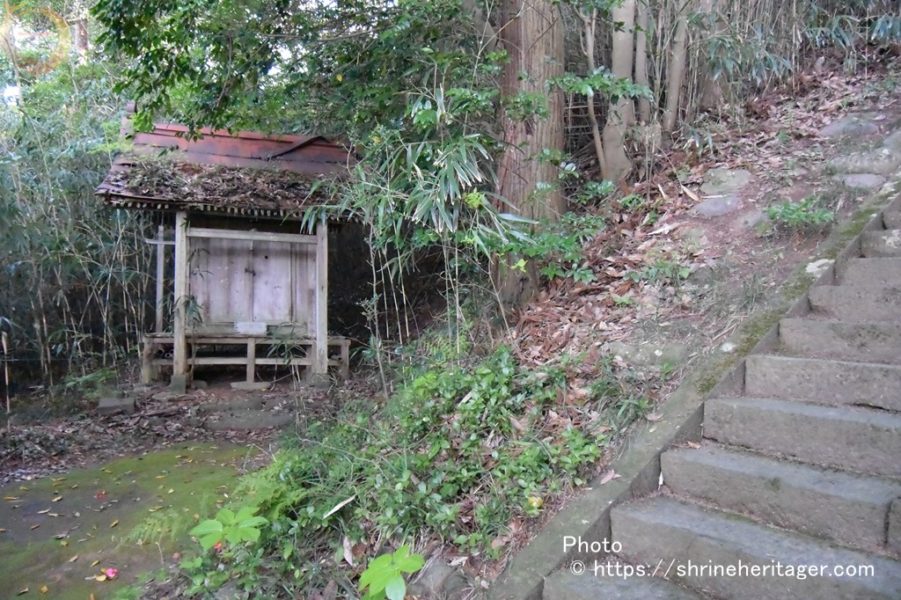
・稲荷神社《主》倉稲魂命
・磯前神社《主》大己貴命・少彦名命
・丸池神社《主》田心姫命・市杵島姫命・高津姫命
スポンサーリンク
Preliminary knowledge of this shrine (Preliminary Knowledge of This Shrine)
This shrine has a long history.
『延喜式神名帳(engishiki jimmeicho)』The two volumes that are regarded as important among all 50 ritual- style scrolls created by the Imperial Court during the middle Heian period are called " engishiki jimmeicho " (edited in December 927). Approximately 1100 years ago, the name of "2861 company" and the number of gods enshrined there are listed in the list of government offices (shikinaisha) nationwide.
[Enki-shiki Shinmeisho] (engishiki jimmeicho) The shrine record was completed in December 927 AD.
[旧 行政区分](Old administrative district)
(神様の鎮座数) ( Number of gods' seats )東山道 382座…大42(うち預月次新嘗5)・小340
[旧 国 名 ](old county name)
(神様の鎮座数) ( Number of gods' seats )出羽国 9座(大2座・小7座)
[旧 郡 名 ](old region name)
(神様の鎮座数) ( Number of gods' seats )飽海郡 3座(大2座・小1座)
[名神大 大 小]Ceremony Meishin Taisha 式内 名神大社
[旧 神社名 ] 大物忌神社(貞・名神大)
[ふ り が な ] (おほものいみの かみのやしろ)
[How to read] (ohomonoimi no kamino yashiro)
https://www.digital.archives.go.jp/DAS/meta/listPhoto?LANG=default&BID=F1000000000000004146&ID=M2014101719562090086&TYPE=&NO=画像利用
国立国会図書館デジタルコレクション 延喜式 刊本(跋刊)[旧蔵者]紅葉山文庫National Diet Library Digital Collection Enkishiki Publishing (formerly owned by) Momijiyama Paperback
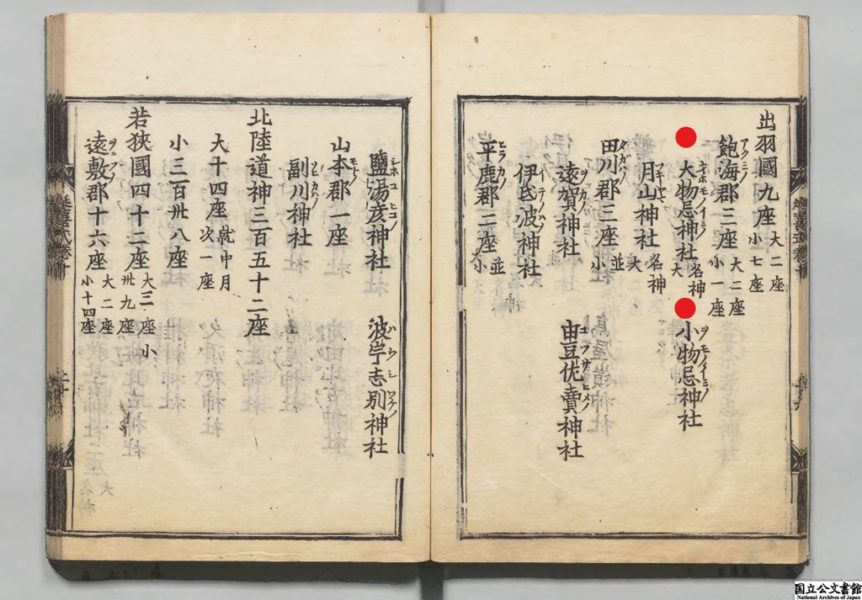
【オタッキーポイント】(Points selected by Japanese Otaku)
I will introduce the preliminary knowledge that will make you interested in this shrine from an otaku perspective.
About "「鳥海山(chokai san)」" where the main shrine of 大物忌神社(omonoimi shrine) sits
The main shrine of 大物忌神社(omonoimi shrine) is located at the top of an active volcano with an altitude of 2,236 m 「鳥海山(chokai san)」, which extends between Yamagata and Akita prefectures.
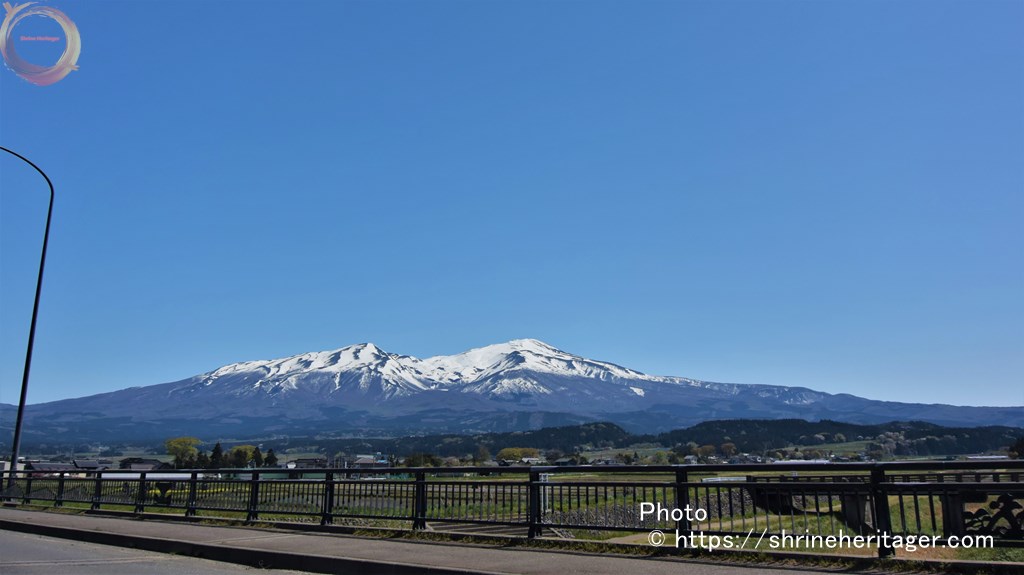
In the old name there was no mountain name "chokai san"
In the history of Rokugoku (orthodox history), such as the completion of "Shoku nihon koki" in 11th year of Jokan (869), this mountain is called "ohomonoimi no ohokami" in Zinza, Amekai-gun. Was
It was called in this way and was respected as the Meishin Shrine.
As a background, the Yamato Imperial Court was striving to build a nation-state, Keiun (704-708), and Wodo (708-715). The Ezo expedition begins, starting the current north of Shonai, Akita
At that time, it is said that this region was covered with primeval forest and there were Ezo that were chased in the south.
Under such circumstances, the active volcano "Chokai san", which constantly emits smoke and sometimes explodes, was a terrifying mountain for the Imperial Court.
Under these circumstances, "ohomonoimi no ohokami" is a "worship (meaning sacrificing sinister uncleanness)", so I hate repeated repeated upheaval (Ezo rebellion). There is a theory that the explosion of Mt. Chokai might have been correlated with the uprising due to the background of the mountain worship that it was believed that it was a god (active volcano) to be generated.
「一之宮」を巡る争い Controversy over "Ichinomiya" Controversy between 吹浦(fuku ra) and 蕨岡(warabi oka)
As a mountain of training for Shinto and Buddhism, as a new god
Chokai san has an altitude of 2,236m. Mountain worship is at its peak.
At the main climbing entrance
・ Yajima-Cascade (Kisakata climbing opening) Akita Prefecture Side ,
・Fukiura, Waraoka Yamagata side there were 4 places
It is a complicated aspect involving denominational and Buddhist denominational conflicts, etc. Different believers form a certain power at each entrance, and it was very common for them to disagree with each other.
In the Edo period, a controversy began to emerge, arguing for the right place for a village at the foot of the mountain by insisting on the management and supervision right of the "Gongendo at the summit" (currently the "head office"). government is also involved in controversy, such as Han "will continue to vigorously endlessly followed
Gotenden at the top of the mountain
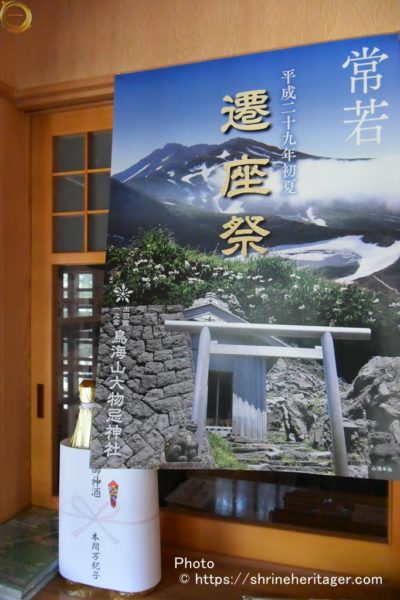
Fukiura precedes Warabioka when responding to the Shinto-Buddha Separation Ordinance in 1868 (Meiji 1868)
Meiji 2 (Meiji 2) All the followers of Fukiura serve Shinto. The issue will also be a large shrine of shrines
May 1871 (Meiji 4) The large shrine of Fukiura will be lined up with Kokuchu Chusha and it will also be possible to manage the Gongendo temple on the summit.
The warriors of Warabioka have repeatedly petitioned Yamagata Prefecture and the Meiji government from Shinobu after Shinobi to try to regain their rights, but the litigation also fails. I thought
August 7, 1880 (1880) Left Minister Arisugawa Miya Shinjō issued a notice that "The Gongendo at the summit will be the main shrine of the big shrine of shrines, and the big shrines of Fukiura and Warabioka will be the shrines (later Kuchino) Palace) and to that "
1881 to the dispute of this notification is performed both had converged
This irregular ritual system was created as an eclectic proposal after a long debate.
There is a shrine office of Kokutatsu Chusha "Otsumonosai Shrine" in Fukura and warabi oka, respectively. Thing
鳥海山大物忌神社(chokaizan omonoimi shrine)「蕨岡(warabi oka)口ノ宮」See also the article
-

chokaizan omonoimi shrine(warabioka kuchi no miya)
(chokaizan omonoimi shrine) is called Dewakuni Ichinomiya. The head office (Okumiya) sits on the summit of Mt. Satomiya is seated in two places, The creation of the shrine of (chokaizan omonoimi shrine) (Waraoka guchinomiya) is handed down to the Emperor Kinmei(欽明天皇) 25 years (more than 1400 years ago)
続きを見る
スポンサーリンク
Visit the Shrine (Pray at the Shrine)
I introduce the state when I visited this shrine.
650m from Fukiura Station, about 10 minutes on foot
There is also an information board on the wall of a private house
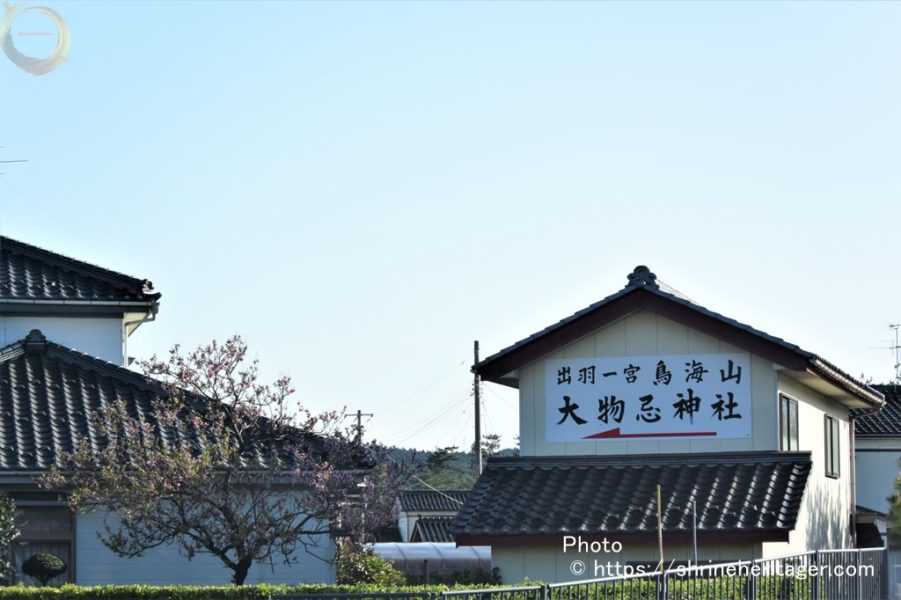
"Ichino torii" is built on the approach to Fukiura Kuchinomiya. I pass through the torii gate in a bow. On the flat side, there is "the first place large shrine of shrines, Torikaiyama Dewakuni Ichinomiya", and next to it,
the company name "Kunitachi Naka It is said to be a shrine big shrine.

At the entrance of the precinct,.
there is a "ni no torii" that is a torii gate on both sides
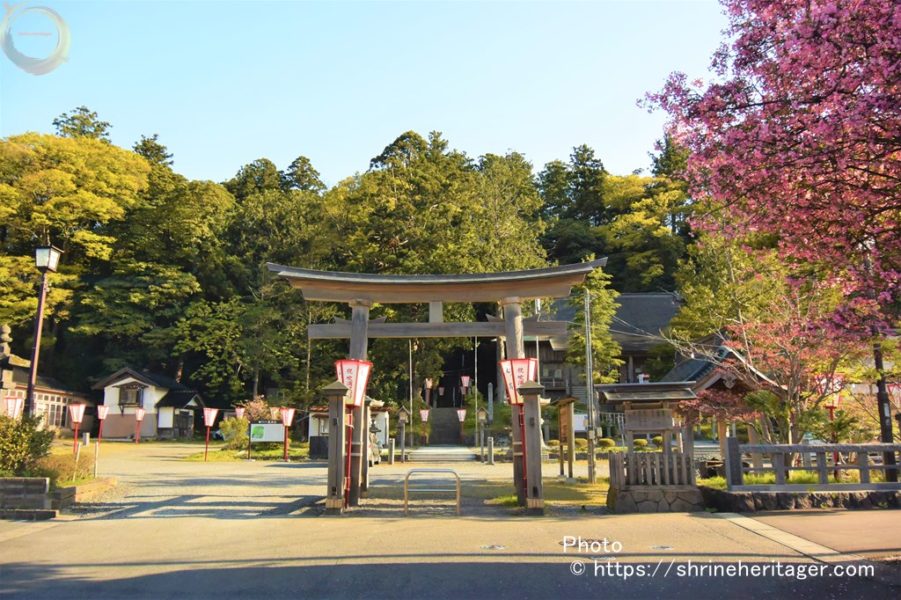
There is a precinct guide on the left

There is a steep stone step in front of the approach
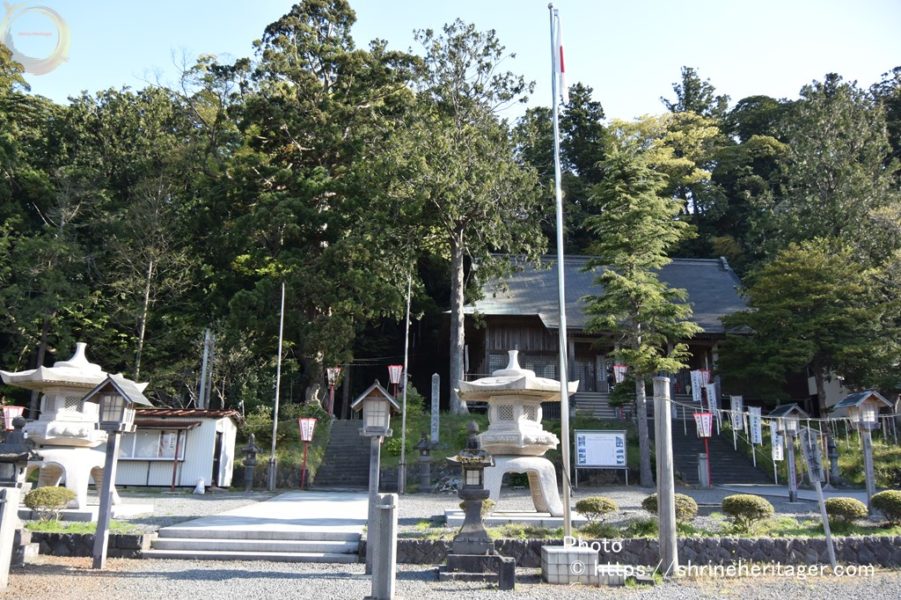
On the right hand side of the stone steps, there is a shrine office and a magnificent "gehaiden". It was built in 1879 and is called the national registered tangible cultural property "gehaiden". It serves as a hall of worship, and even if you don't go up the stone steps, there is also a money box, so you can worship here.
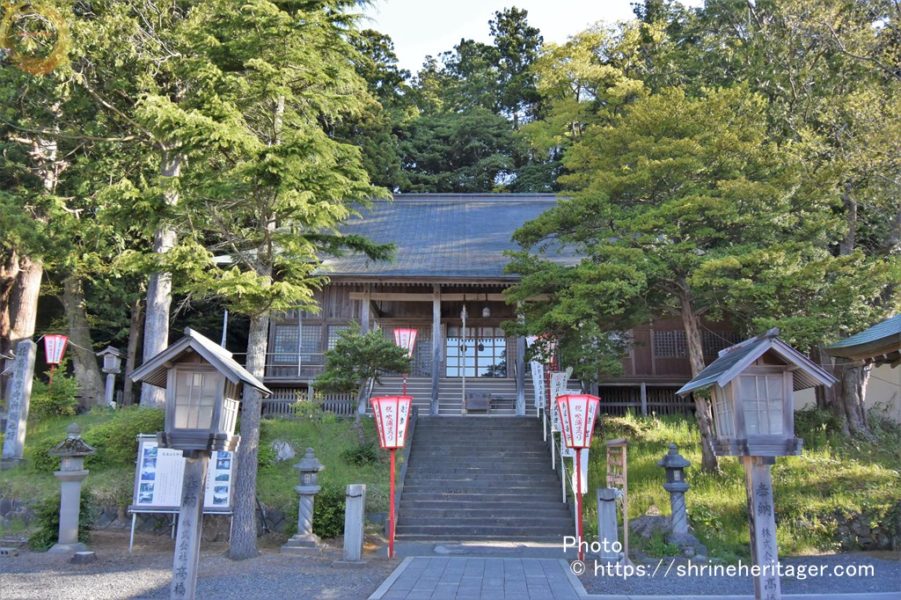
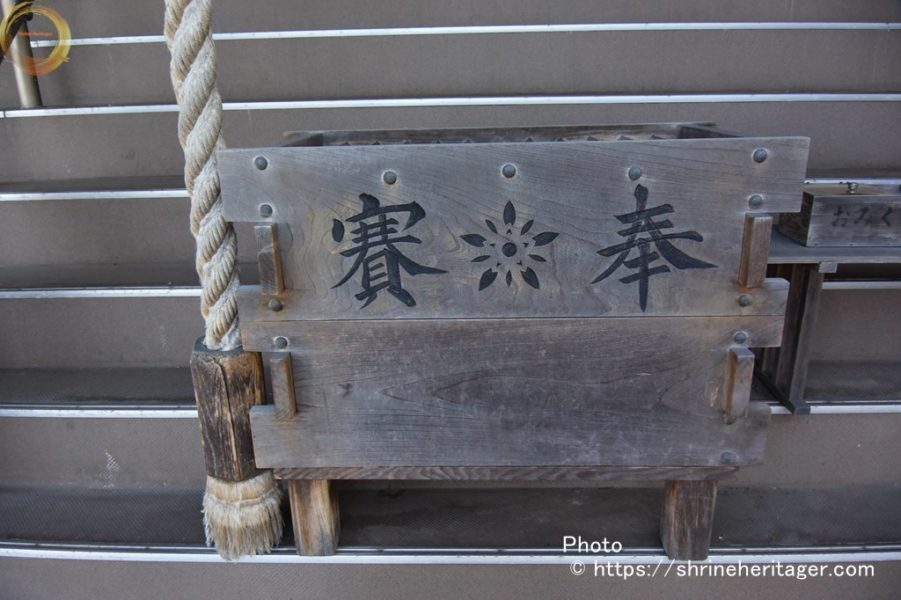
It is a precinct which looked back from "gehaiden".「下拝殿(gehaiden)」
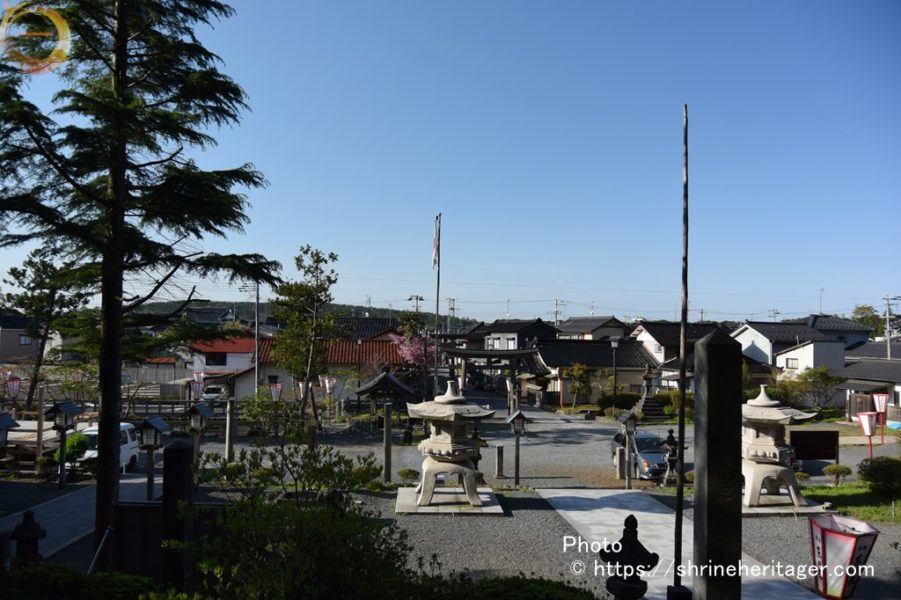
There is a stone step next to the lower shrine that leads to the upper shrine.
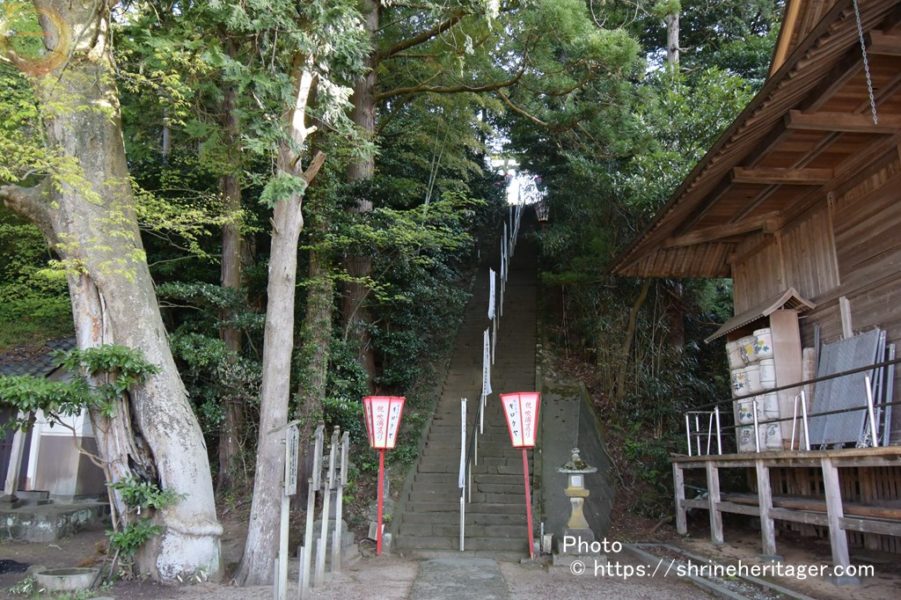
On the left side before the steep stone steps, we pray for the shrine
Fu Shrine 風神社 《Lord》志那津彦命・志那津姫命Shinatsu Hikomei/Shinazu Himemei
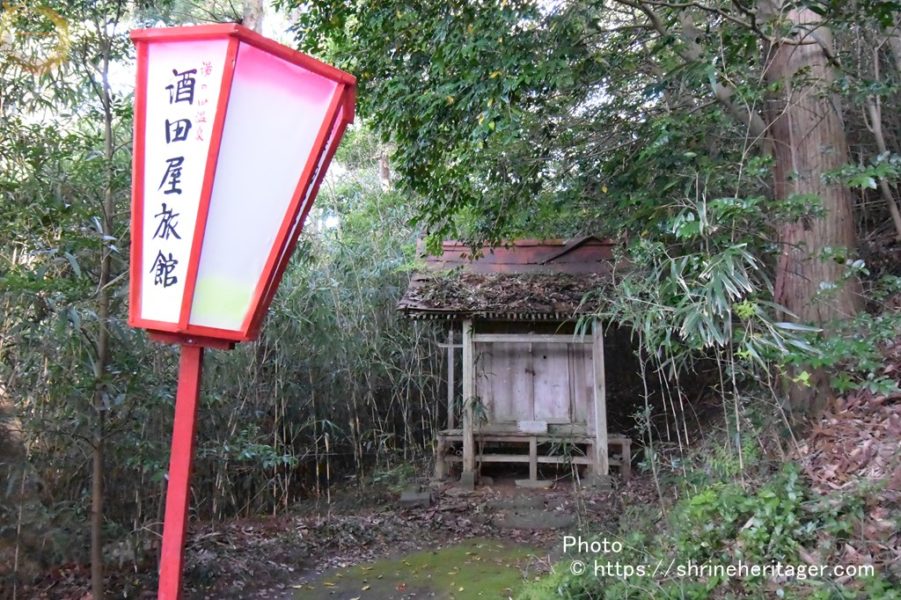
As you go up the stone steps, you will see "Sanno Torii"「三の鳥居」
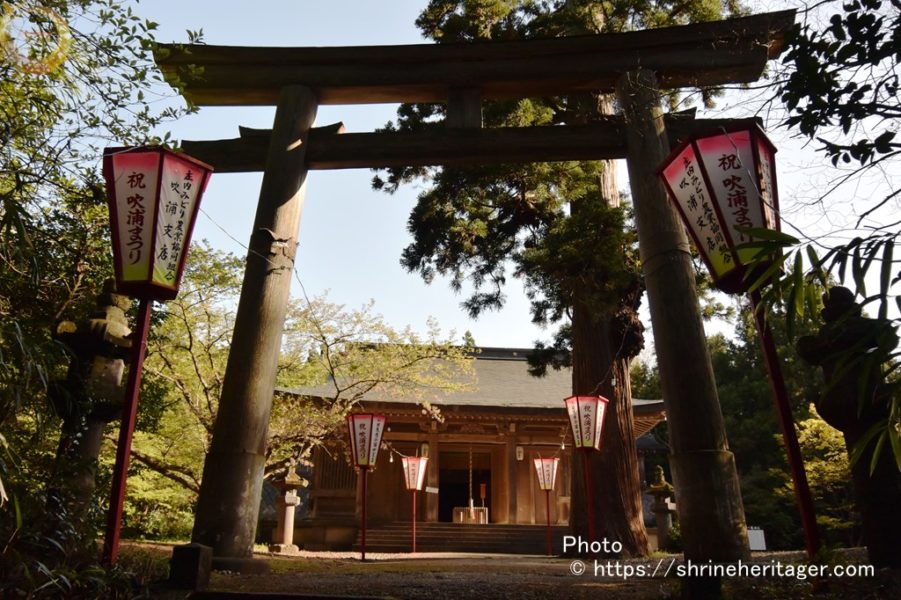
Beyond that, a magnificent "hall of worship" will be built as an important cultural property of the nation built in 1943.
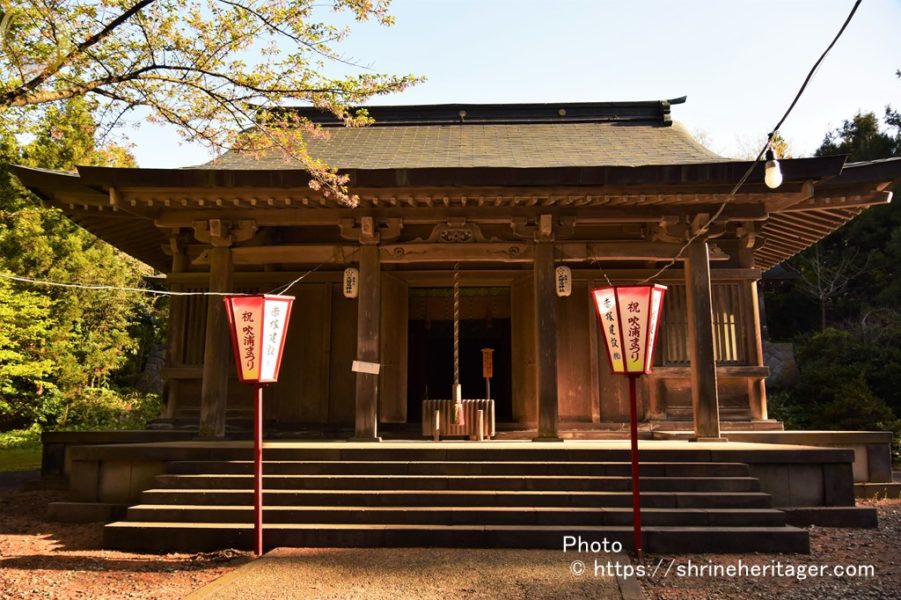
I will go to the hall of worship
Perhaps it was the day before the festival, the lanterns were "God crest and Chokaizan big shrine shrine"
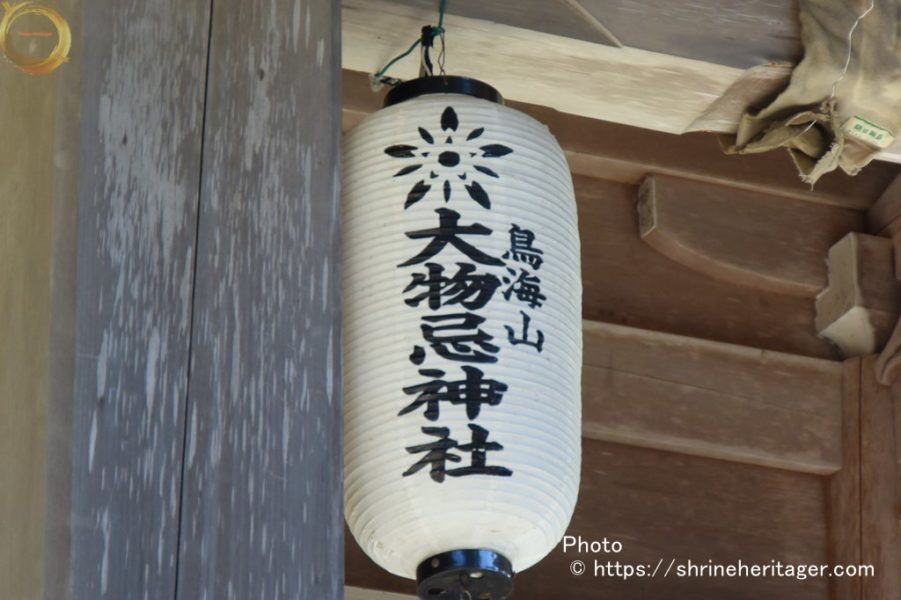
Make a donation and pray
A prayer that puts both hands together, praying to reach the deity of the festival

From the hall of worship to the main hall, there is a corridor leading to the middle gate in front of the main hall.

There is a taste in it, so I will look at the worship hall from the side
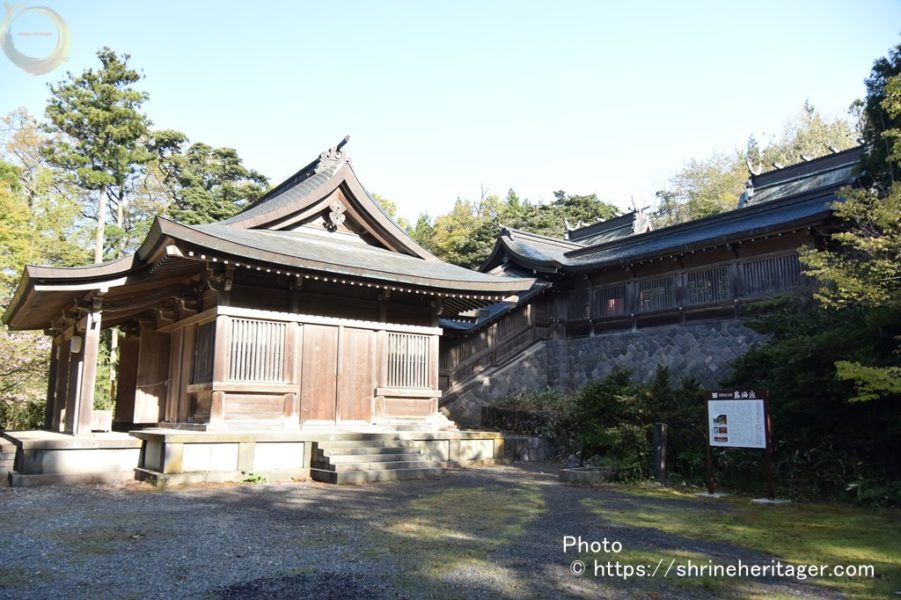
It is easy to understand the positional relationship with the main shrine, and there is a corridor connected from the worship hall.Behind it is the Nakamon main shrine, which is characterized by two red-colored main shrines lined up.

The main halls of the two companies lined up are
Go to the right「鳥海山大物忌神社 吹浦口ノ宮」本殿
Go to the right left「摂社・月山神社」本殿
In this way, the two pillars are enshrined in a line, so it is also called "Ryoshogu" ("Ryosho Daibosatsu" in the Shinto-Butsu tradition).
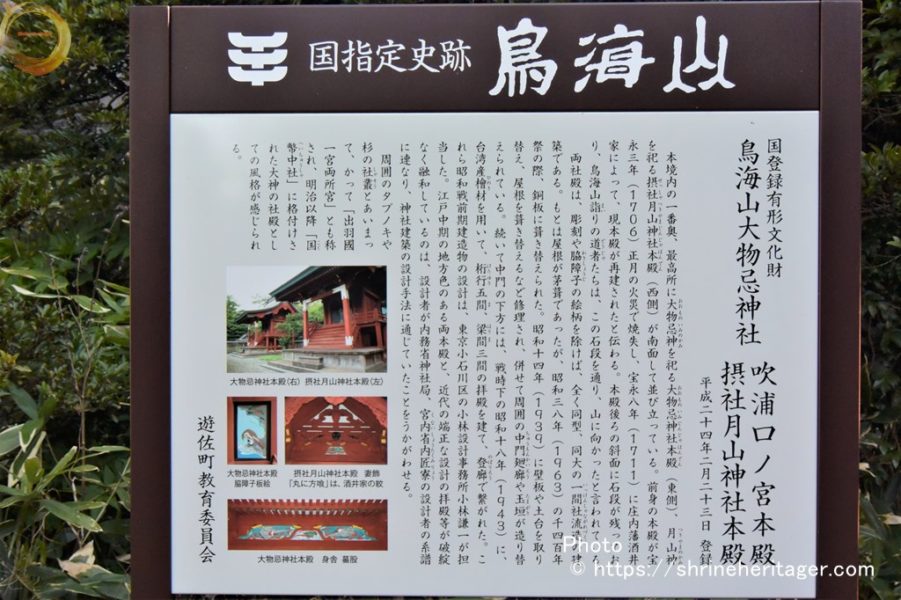
There is a stone step approach to the left of the shrine and you can visit the shrine next to the main shrine.
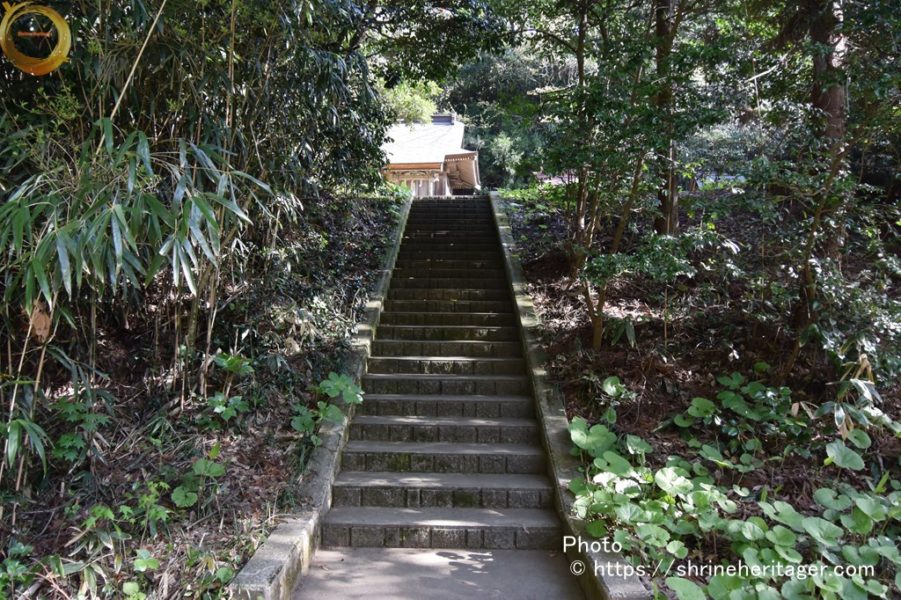
As you go up the stone steps, there are three shrines
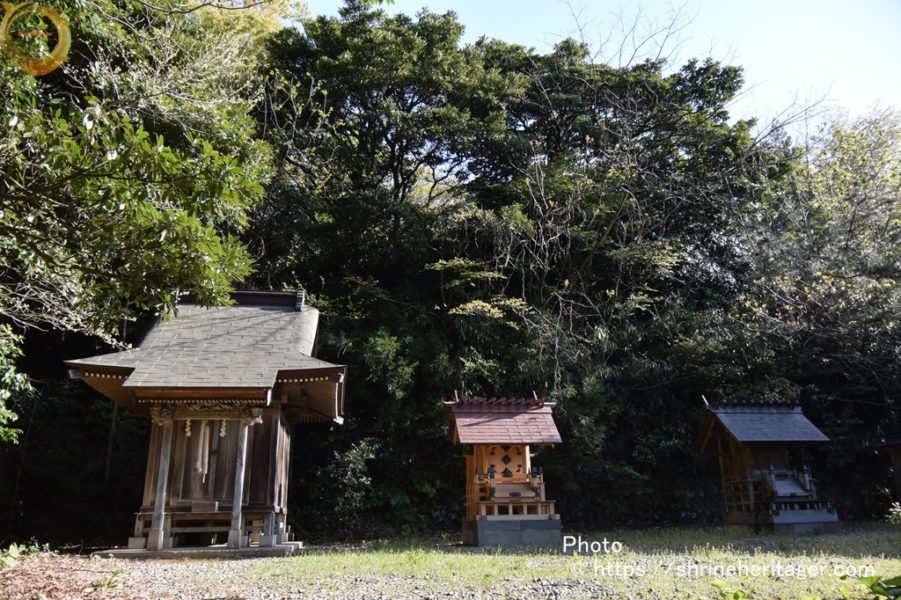
Left hand facing
・白山姫神社《主》伊邪那美命
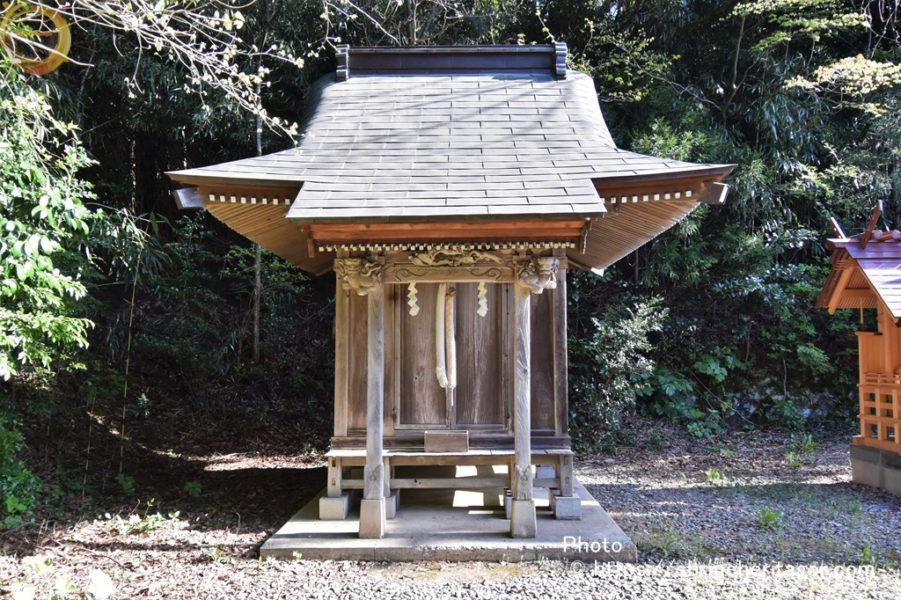
In the center, the transfer and the Holy Spirit were moved from the Kaza Shrine, which was on the left side of the climbing stone steps.
・風神社 《主》志那津彦命・志那津姫命

Right hand
・雷電神社《主》雷神

From here, I will look up to the main shrine up close. It is the main
shrine of Gassan Shrine that sits in front of you.
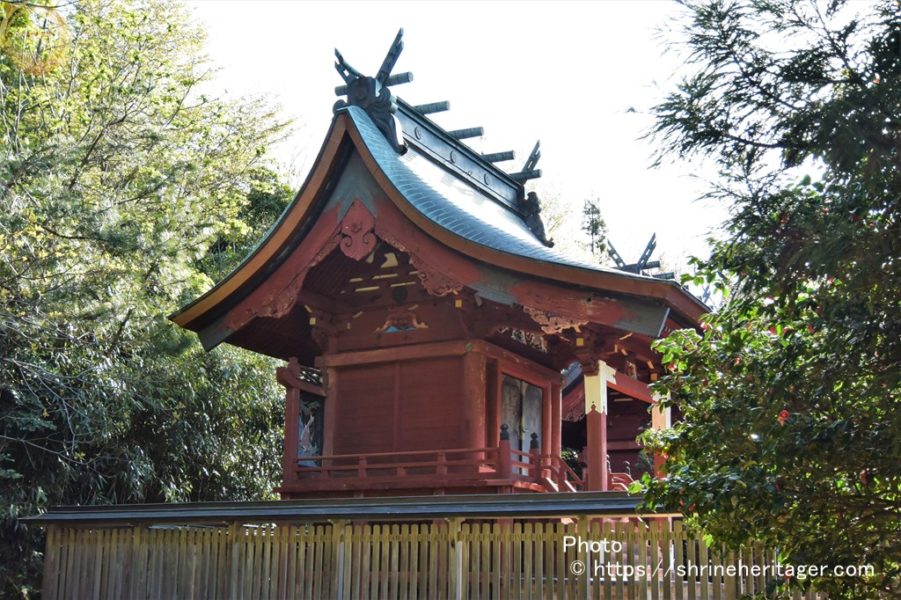
It is said that both of the main shrines at Fukiuraguchinomiya,
the Chokaisan Daimonosai Shrine , were rebuilt by the Shonai clan Sakai family in 1711.
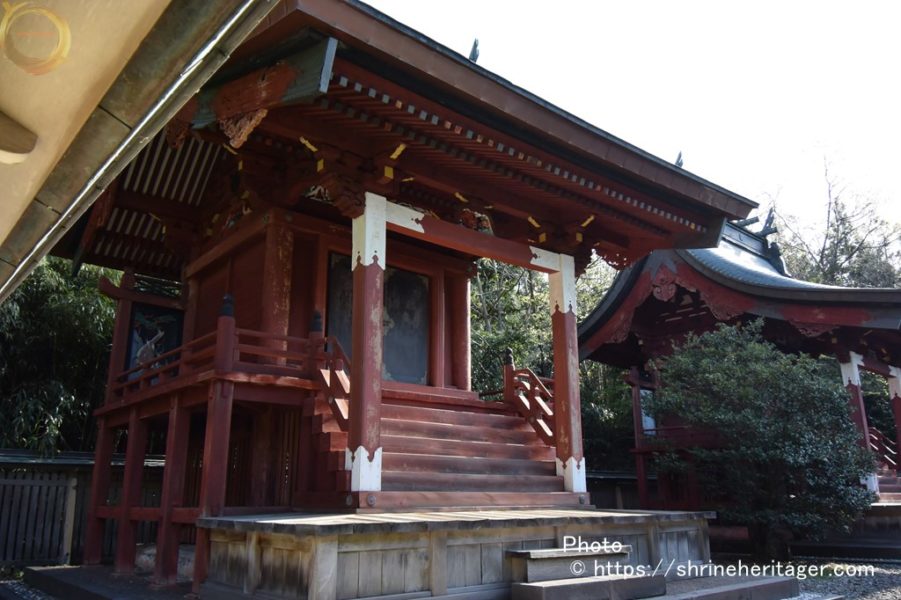
Return to Oki in front of the shrine
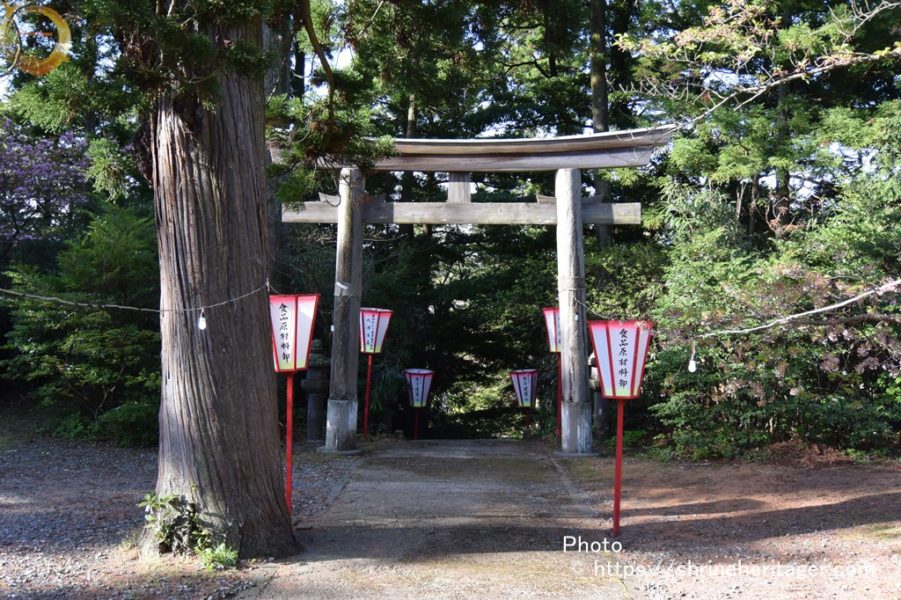
Return to the approach stone steps
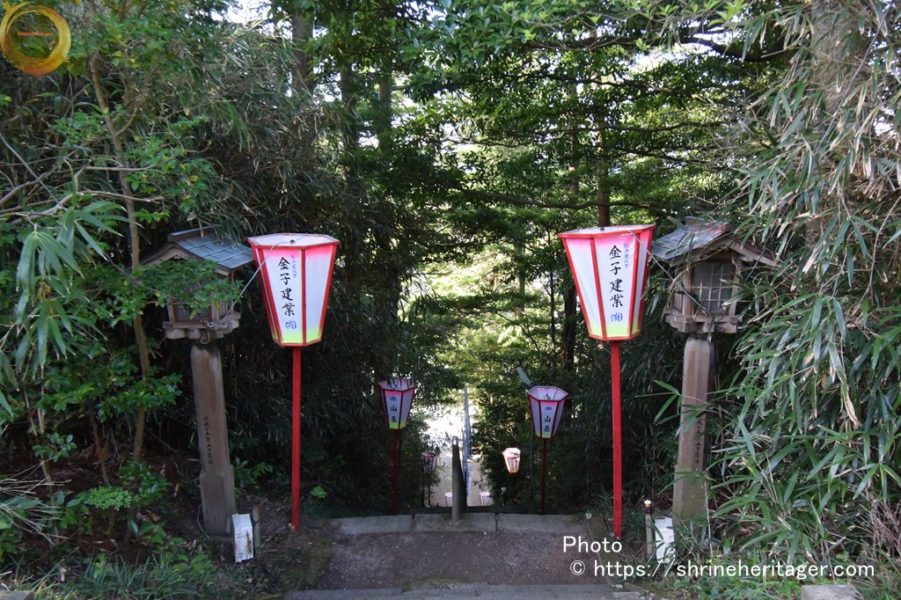
At this shrine office, you can get red stamps for both "fuku ra" and "warabi oka". Normally, "warabi oka" does not have a priesthood, so there is no red stamp .
Can't get
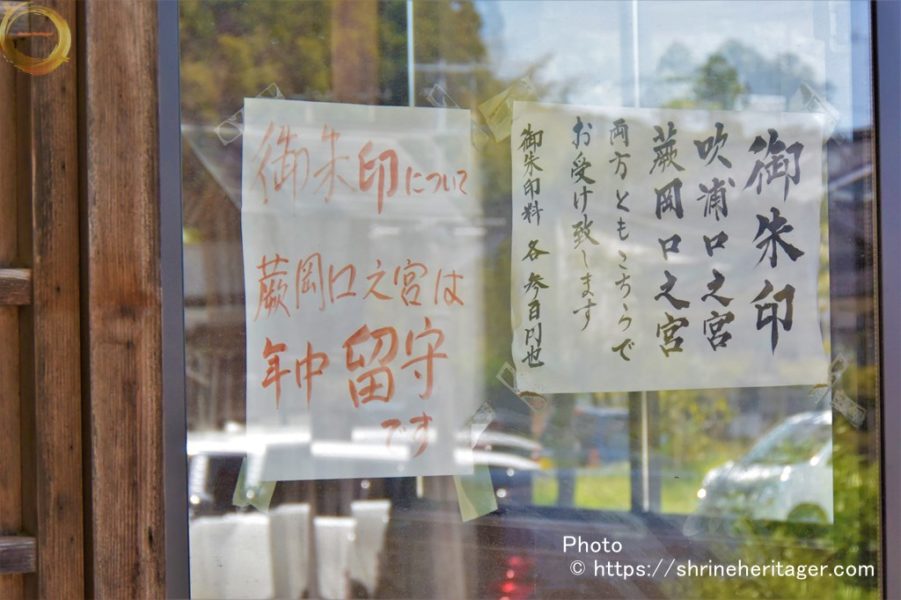
Since "warabi oka" was a festival today,
I was given a red stamp when I worshiped, so while the priest opened the Shushuchocho book, he said, " I was able to visit Warabi oka . I was smiling."
Both stamps are posted
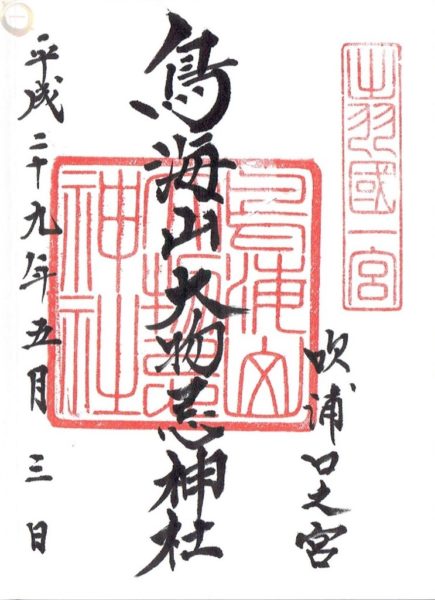
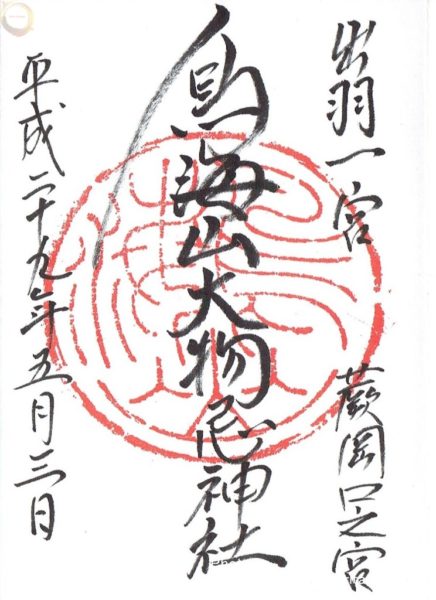
There is a Saikan in the precincts, and because of the preparation for the festival, the villagers were visiting one after another, and many flowers were offered by the window.
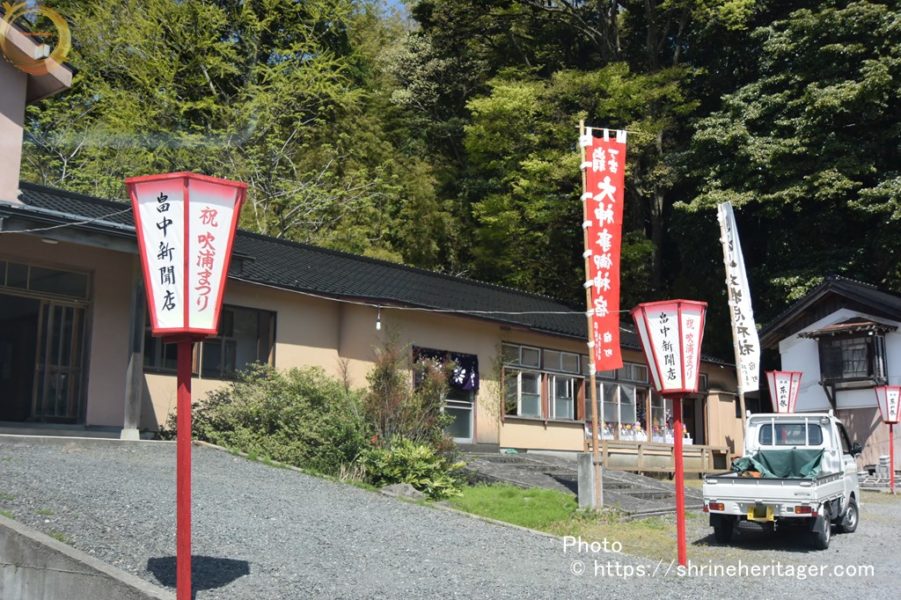
I'll leave the precincts.

Go through the torii and look back
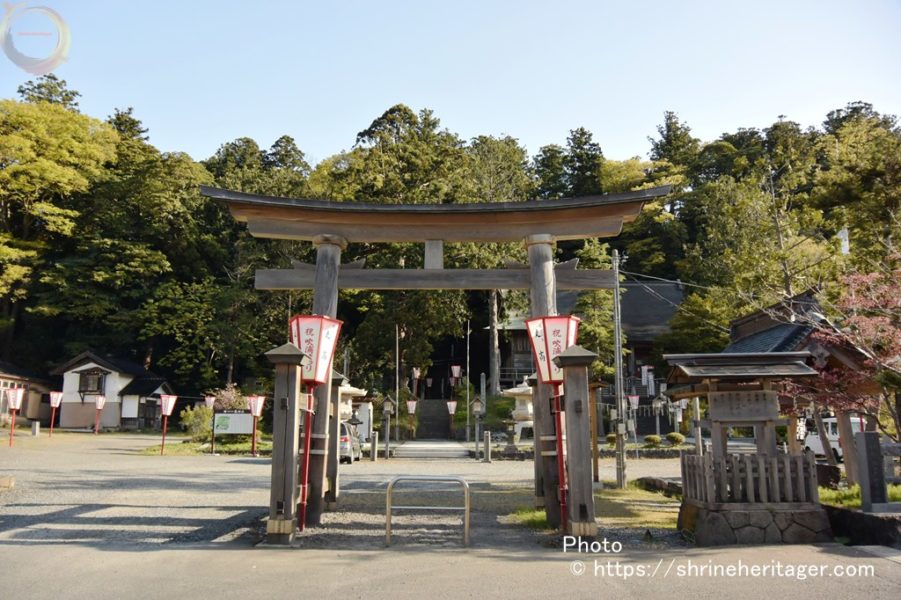
スポンサーリンク
神社の伝承(Old tales handed down to shrines)
I introduce the thing related to this shrine and the literature described.
『続日本後紀(shoku nihon koki)』 The tradition written in the article of July 26, 840 (July 26)
"Awe and reverence" is written for "Mt.
「要約」"Summary"
「 大物忌神に正五位下勳五等を従四位下勳五等へ陞叙を奉じ授ける
because envoys ship was wrecked in the previous year the pirates soldiers less when there in pirate attacks I was able to repel it.
This is the blessing of the great evil god who was erupting at the same time to represent God's prestige, and the condemnation of Emperor Nimei was accompanied by the donation of two Kamibushi."
[See the original text]National Archives Digital Archives『続日本後紀』貞観11年(869年)完成 選者:藤原良房/校訂者:立野春節 刊本 寛政07年[旧蔵者]内務省
https://www.digital.archives.go.jp/DAS/meta/listPhoto?LANG=default&BID=F1000000000000047680&ID=&TYPE=&NO=
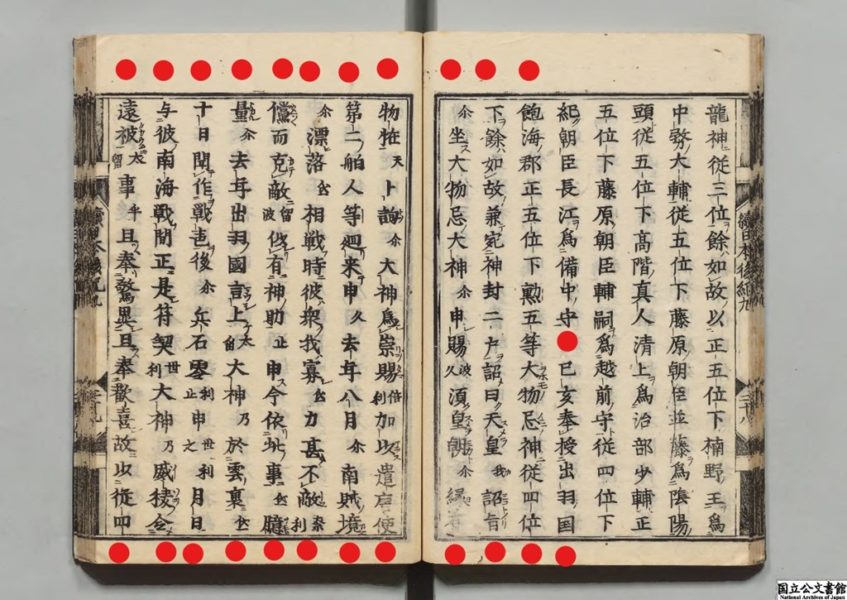

『日本三代実録(nihon sandai jitsuroku)』Tradition in the report of Article Dewa Kunishi on May 16, 1371 (871)
Nordhaven
「 出羽国司の報告
" A large-sized shrine of the third place of Deba Kunishi's report, 3rd place, Keigo, is located on the mountain in Amekai-gun. It is rare for people to come to us because of the stone walls that stand on it. It is snowy in summer and winter, and plants are not bald.There was an eruption on April 8th,
and it burned mud and made a thunderous voice. The river flowing out of the mountains was colored blue-black and overflowed with muddy water, filled with unbearable odor.The river was blocked by dead fish, and two large snakes with a length of 10 (about 30 m) flowed into the sea in a row. The number of small snakes that accompany it was numerous,
and the green seedlings of the river often failed to flow. Some are floating in muddy waterWhen I asked the old man, it was an unprecedented accident, but when the eruption occurred during the Hirohito years (810 to 824), there was some war and there was a war.
When the court received a report from them, they performed a fortune-telling at the Yin-yoryo. All of the results prayed to the deities of Dewa, but neglected the later festivals, and the skeletons (gai kotsu) of the chiyo tombs (haka) fell in the sansui. I was angry and burned the mountain because I was messing up.
It was said that if such a calamity happened, a war would occur unless a memorial service was held . I ordered the national defense to remove the skeleton (gai kotsu) of the chiyo tomb (haka)."
[See original text] The National Archives of Japan Digital Archives『日本三代実録』延喜元年(901年)成立 選者:藤原時平/校訂者:松下見林 刊本(跋刊)寛文13年 20冊[旧蔵者]紅葉山文庫https://www.digital.archives.go.jp/DAS/meta/listPhoto?LANG=default&BID=F1000000000000047721&ID=M2014093020345388640&TYPE=&NO=
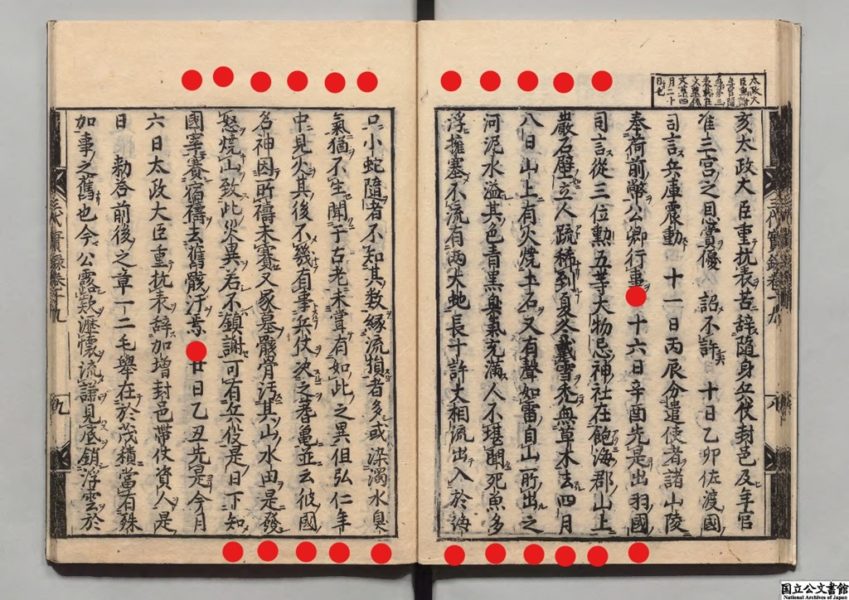
The head office (Okumiya) sits at the summit of Mt. Chokai, and the village called "Kuchinomiya" is located at the foot of the foothills of Mt. Dewa Kuninomiya. It is called "Fukura" and "warabioka". It is said to have been enshrined in various places as the reign of Emperor Kinmei Twenty-five years (more than 1400 years ago)
鳥海山大物忌神社(chokaizan omonoimi shrine)
(吹浦口ノ宮)(fuku ra) in "hai" (90 degree bow)
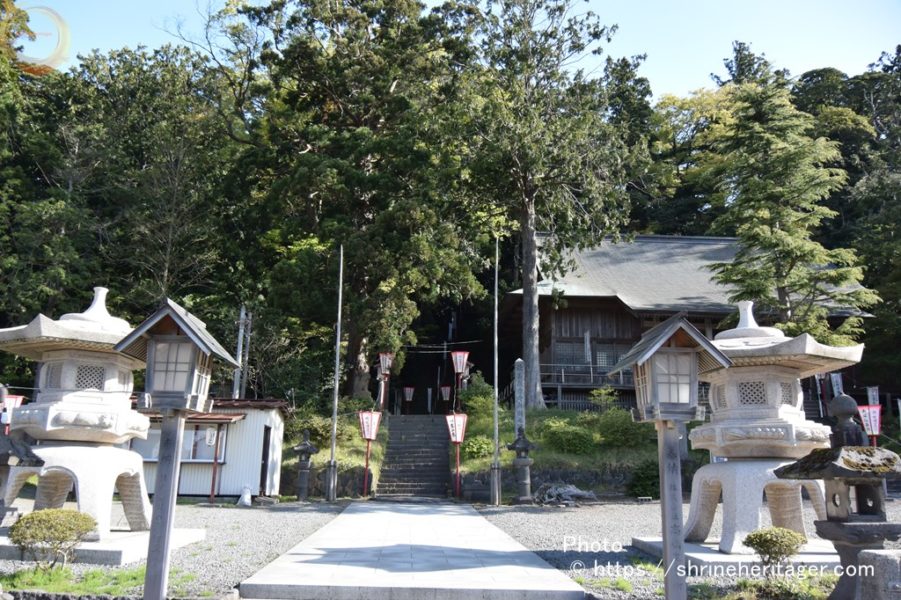
鳥海山大物忌神社(chokaizan omonoimi shrine)
蕨岡(warabi oka)article also please visit
-

chokaizan omonoimi shrine(warabioka kuchi no miya)
(chokaizan omonoimi shrine) is called Dewakuni Ichinomiya. The head office (Okumiya) sits on the summit of Mt. Satomiya is seated in two places, The creation of the shrine of (chokaizan omonoimi shrine) (Waraoka guchinomiya) is handed down to the Emperor Kinmei(欽明天皇) 25 years (more than 1400 years ago)
続きを見る

